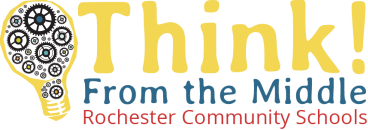ABC Taxonomy
Description: A taxonomy is an alphabetical list of terms related to a topic or subject that develops skills of categorization. Taxonomies assist students with the following skills: – organizing prior, ongoing, and new knowledge – expanding vocabulary – taking notes – focusing on a topic – building a personal thesaurus How to Use the Strategy:
|
Four Corners
Description: Four Corners is used to gather data in a quick, visual way that is engaging to students. Students respond to a multiple choice question by moving to one of the four possible answers that are posted in four different corners of the classroom. How to Use the Strategy:
|
Consensus Circle
Description: Consensus Circle is an activity that allows all students to share their viewpoints with each other before coming to an agreement. How to Use the Strategy:
|
Jigsaw
Description: Jigsaw is an efficient way to learn material in a limited amount of time. It also encourages listening, engagement, and empathy by giving each group member an essential part to play in the activity. How to Use the Strategy:
|
Final Word
Description: The Final Word can be used to expand a group’s understanding of a text in a focused way and in a limited amount of time. Students work in groups of four. The person in each group who starts gets 4 minutes Each person in the group gets 3 minutes to respond (3 people = 9 minutes) The person who started has the FINAL WORD – 2 minutes How to Use the Strategy:
For each Round (4 Rounds of 15 Minutes Each)
ROUND TWO then begins, with the next person explaining the significance of his/her quote/selection from the text to the group. Rounds two, three, and four follow the same format as Round One. |
Leaderless Discussion
Description:
Leaderless Discussion is a thinking routine that encourages discourse and promotes understanding of a piece of text. Students come prepared for the discussion with two questions that encourage a deeper understanding of the material rather than just comprehension of the text. Students may need “Question Starters” when first being taught the routine in order to formulate their questions successfully.
Leaderless Discussion is a thinking routine that encourages discourse and promotes understanding of a piece of text. Students come prepared for the discussion with two questions that encourage a deeper understanding of the material rather than just comprehension of the text. Students may need “Question Starters” when first being taught the routine in order to formulate their questions successfully.
